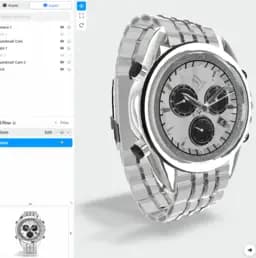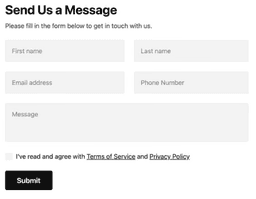Three.js vs WebGL: Which Is Worth Your Time?
Three.js is an easy-to-use, high-level JavaScript library that enables GPU-accelerated 3D animations in a web browser, with support for AR/VR via WebXR. WebGL, on the other hand, is a low-level 3D graphics API that brings 3D to the web through browsers, providing GPU 3D acceleration and native GLSL support, but with direct coding involvement.

Key Differences Between Three.js and WebGL
- Usage Complexity: Three.js simplifies creation of 3D animations, WebGL requires in-depth coding.
- Language: Three.js is built on JavaScript, while WebGL is linked to ECMAScript via HTML5 Canvas.
- AR/VR Support: Three.js supports AR/VR. WebGL doesn’t inherently, but can be used with libraries that do.
- Built upon: Three.js is a high-level library built on WebGL, WebGL is a low-level API built on OpenGL ES.
| Comparison | Three.js | WebGL |
|---|---|---|
| Initial Release | April 24, 2010 | 2011 |
| Type | JavaScript library | 3D graphics API |
| GPU acceleration | Yes | Yes |
| Original language | ActionScript, ported to JavaScript in 2009 | Connects to ECMAScript via HTML5 Canvas |
| WebGL Compatibility | Uses WebGL, WebGL 2.0 by default from version 118. | Based on WebGL, matches OpenGL ES |
| Contributors | Over 1,700 on Github | Developed by Khronos group |
| Graphics | 3D | 3D |
| Browser Integration | All browsers that support WebGL 1.0 | Apple, Google, Microsoft, and Mozilla |
| License | MIT | Open Source |
What Is Three.js and Who’s It For?
Three.js, a JavaScript library developed by Ricardo Cabello, also known as Mr.doob, is designed to create and display dynamic 3D computer graphics in a web browser. Powered by WebGL, it offers GPU-accelerated 3D animations using JavaScript, eliminating the need for browser plugins. With other high-level libraries like GLGE and Scene.js, complex 3D animations become simpler to create.
Situated on Github since its initial release in April 2010, Three.js is crucial for developers, animators, and creatives dabbling or specializing in creating 3D content for the web. It supports a plethora of features from multiple scenes, effects to animations and geometry, accelerating web-based 3D model rendering and animation.

Pros of Three.js
- Allows complex 3D animations with JavaScript
- Compatible with all browsers that support WebGL 1.0
- Feature-rich including multiple effects, lights, objects and more
- Supports Virtual and Augmented Reality via WebXR
- Backed by a vast community of over 1700 contributors on Github
Cons of Three.js
- Requires a good understanding of JavaScript and 3D graphics
- Complexity can be overwhelming for beginners
- Regular updates may affect stable development and require code modification
What Is WebGL and Who’s It For?
Introduced by Kronos Group in 2011, WebGL stands as a low-level 3D graphics API that leverages HTML5 canvas and runs on OpenGL ES. As a cross-platform compatible technology, WebGL delivers 3D graphics directly into browsers, with direct access to Graphic Processing Units (GPUs) on computers, all without the necessity for plugins.
Developers, game designers, and graphics enthusiasts find value in WebGL for its capacity in online interactive 3D graphics. With its reach extending to mobile via iOS Safari, Android Browser, and Chrome for Android, WebGL has turned into a web standard for 3D graphics both on mobile and desktop.

Pros of WebGL
- Allows GPU-accelerated 3D graphics without plugins
- Enables direct interaction with other HTML Document elements
- Provides integrated cross-platform and native GLSL support
- User-friendly with its JavaScript automatic memory management and no need for compilation
- Runs without a JVM, controlled by the web browser
Cons of WebGL
- Limited by OpenGL’s relatively slower speed and comprehensibility
- Dependent on browser’s support for OpenGL
- Not optimal for highly complex 3D games
- Requires significant knowledge in 3D graphics and programming
Three.js vs WebGL: Pricing
Both Three.js and WebGL are open-source technologies distributed under the MIT License, meaning they’re freely accessible for modification and use.
Three.js
Three.js is a free JavaScript library for generating and displaying animated 3D computer graphics, licensed under the MIT License. Hosted on Github, it has been contributed to by a community of over 1700 developers and remains open-source, implying it incurs no costs for usage or modification.
WebGL
Similarly, WebGL is an open-ware 3D graphics API, companioned with HTML5 Canvas and also distributed under the MIT License. This signifies that it, too, can be utilized, altered, and distributed freely without neglected financial implications.
Code Examples for Three.js & WebGL
Three.js: Creating a Spiral Tube Geometry
In this code snippet, we move beyond basic geometries; rather than simply creating a cube, we create a more intricate shape—a spiral tube. To achieve this, we exploit THREE.TubeGeometry functionality. Prior to implementation, ensure you have the latest version of THREE.js library installed.
var customPath = new THREE.Curve();
customPath.getPoint = function(t) {
var tx = t*3 - 1.5;
var ty = Math.sin(2 * Math.PI * t);
var tz = Math.cos(2 * Math.PI * t);
return new THREE.Vector3(tx, ty, tz).multiplyScalar(30);
};
var tubeGeometry = new THREE.TubeGeometry(customPath, 64, 8, 8, false);
var tubeMaterial = new THREE.MeshBasicMaterial({color: 0x00ff00});
var tubeMesh = new THREE.Mesh(tubeGeometry, tubeMaterial);
scene.add(tubeMesh);WebGL: Creating an Interactive 3D Rotating Cube
Progressing from static shapes, this WebGL code snippet illustrates an interactive 3D cube. The cube responds to mouse events, rotating accordingly. Before deployment, confirm your HTML file links to the latest WebGL utility library—glMatrix.js.
var cubeRotation = 0.0;
function drawScene(gl, programInfo, buffers, deltaTime) {
gl.clearColor(0.0, 0.0, 0.0, 1.0);
gl.clearDepth(1.0);
gl.enable(gl.DEPTH_TEST);
gl.depthFunc(gl.LEQUAL);
gl.clear(gl.COLOR_BUFFER_BIT | gl.DEPTH_BUFFER_BIT);
var fieldOfView = 45 * Math.PI / 180;
var aspect = gl.canvas.clientWidth / gl.canvas.clientHeight;
var zNear = 0.1;
var zFar = 100.0;
var projectionMatrix = mat4.create();
mat4.perspective(projectionMatrix, fieldOfView, aspect, zNear, zFar);
var modelViewMatrix = mat4.create();
mat4.translate(modelViewMatrix, modelViewMatrix, );
mat4.rotate(modelViewMatrix, modelViewMatrix, cubeRotation, );
cubeRotation += deltaTime;
}Three.js vs WebGL: Making the Superior Choice
When deciding between Three.js and WebGL, shedding light on intrinsic factors, coupled with user requirements, paves the optimal path. Here’s our take.
AR/VR Content Builders
Three.js, with integral WebXR support, substantiates the ideal choice for crafting AR/VR experiences. Significant features like multi-camera scenes, advanced 3D animations, and exhaustible material and shader options override the low-level API limitations WebGL places upon real-time 3D graphic manipulations.

Open Source Enthusiasts
WebGL springs as the open source marvel, enabling accentuated integration with HTML canvas and DOM interfaces. It stands resilient as a feature of HTML 5, thereby granting a seamless operational experience across varied browsers.

JavaScript Aficionados
Gravitating towards Three.js brings about an invigorating animatic journey for JavaScript enthusiasts. Providing GPU-accelerated 3D animations through JavaScript, Three.js removes the need for browser plugins, allowing developers to stay in their comfort cogwheel of JavaScript.

Browser Compatibility Seekers
For developers apprehensive about browser compatibility, WebGL clinches the debate. Its across-the-board acceptance across all major browser vendors including Apple, Google, Microsoft, and Mozilla warrants an unbroken experience on every front.
Low-Level API Developers
Professionals inclined towards low-level APIs may lean towards WebGL, given its conformance to OpenGL ES. Its innate support for robust 3D hardware ratifies its strength in this sphere.

Ultimately, choosing between Three.js and WebGL depends on the load your project requires and your proficiency in managing a higher-level library or a lower-level API. Delineate your objectives, match them with the features, and your choice shall surface distinctly.







